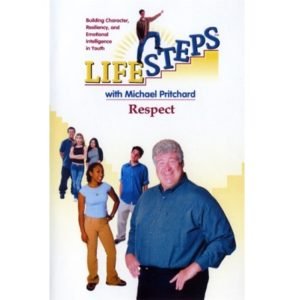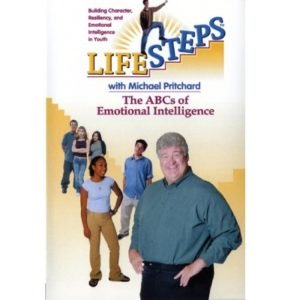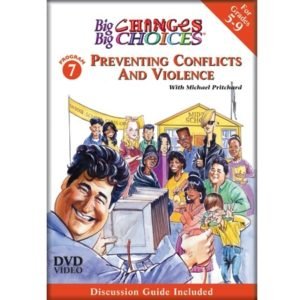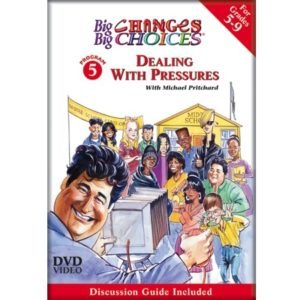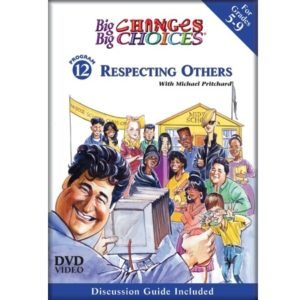EDIBLE MARIJUANA: Is It Safe?
$149.95
-For Grades 7 & Up
-DVD + Printable Teaching Guide
While many teens may think that eating marijuana is an okay way to get high, it is in fact dangerous, risky and still illegal for teens in every state, even those where marijuana use is legal. This program helps teens understand the science of why the THC in edible marijuana causes unpredictable and dangerous highs. Metabolizing edible marijuana produces a…
- Description
Description
While many teens may think that eating marijuana is an okay way to get high, it is in fact dangerous, risky and still illegal for teens in every state, even those where marijuana use is legal. This program helps teens understand the science of why the THC in edible marijuana causes unpredictable and dangerous highs. Metabolizing edible marijuana produces a different response than smoking it, so the risks of underestimating the potency of eaten marijuana can lead to intoxication, paranoia, high anxiety, and tolerance. The program stresses that teens are more susceptible than adults to brain damage from marijuana use of any kind; there are no 100% accurate uniform standards for THC content even in states where recreational marijuana use is legal; some edibles may look like ordinary candy, cookies, cakes, and other foods; marijuana in any form is psychologically addictive and perhaps physically addictive; marijuana use can impact school, family, work, friendships, motivation, and energy levels. As edibles become more and more easily available, teens need to understand the risks and dangers, including DUI.
Includes: 18-minute video, printable teacher’s resource book, and student handouts with pre/post tests.
DVD contains Spanish subtitles.
Sample Video Clip:
Reviews:
Highly Recommended. With the legalization of marijuana in Colorado the safety of the edible form of the substance is coming into question because of how easily accessible it is. The effects edibles have on teens are closely examined in Edible Marijuana: Is It Safe?. An important feature of this film is the comparison it makes between smoking marijuana and consuming an edible. The ingredient that makes marijuana potent and gives users their “high” is THC (tetrahydrocannabinol). In edibles it is often synthetic with other materials added to it, which makes it more potent and more harmful.
Edible Marijuana provides information to teens in a non-condescending manner—a nice change from other drug and substance abuse prevention videos. The facts are firm, well explained, and get the point across with real life stories. It shows the dangers of edibles: the actual amount of THC is often unknown, the possibility of accidental ingestion by children, and the likelihood of an overdose.
Provided with the disk is an extensive Teacher’s Resource book which includes, quizzes, work sheets, fact sheets and much more. If you are interested in a preview of the film it can be found on the Human Relations Media website along with the option to rent the film.
—Nicole Jesse, Librarian I, West Seneca Public Library
EMRO (Educational Media Reviews Online)
Highly Recommended (3.5 stars out of 4) The long-running joke about stoners and the munchies is no laughing matter in this guidance program about the real danger of edible marijuana products. Much of the risk comes not just from the significantly higher potency of modern ganja but also in the time it takes for the digestive system to register that THC (the active component) is entering the bloodstream. While pot smokers may feel the effects in a s little as 20 seconds, those who ingest edibles might not notice anything until hours after the first taste. During that lengthy interval, they might consume way too much and then suffer the consequences, which can include trips to the emergency room. Another complicating factor is trying to determine the exact amount of THC present in edible products; some labels address this specifically, but others do not, leaving many home cooks essentially playing a guessing game. The food itself looks like, well, regular food—including gummi bears, granola, instant ramen, and the ever popular cookies and brownies, making them particularly dangerous to children, who would likely not be aware of the difference until it was too late. Edible Marijuana features professionals who talk about the risks, as well as young people (users in states such as Colorado, where recreational marijuana is legal) who discuss their sometimes painful experiences, express their general enjoyment of marijuana, and ponder the concept of addiction—both physical and psychological. Also featuring a PDF teacher’s resource guide, this is highly recommended
—C. Block
—Video Librarian
When marijuana is smoked, the drug reaches the brain quickly, and users generally feel the effects almost immediately. Edible marijuana, however, can take more than an hour to pass through the digestive system and cause a noticeable body response. In this cautionary program, teens share their experiences with marijuana, talking about munching on marijuana-laced brownies and candies while unaware of the cumulative effects of THC, a component of marijuana that can cause frightening bouts of nausea, dizziness, and weakness. Health experts describe the human digestive process (animated drawings illustrate the information) and warn about the dangers of overdoses, accidental ingestion, addiction, and permanent brain damage. Teens are urged to call for help if they observe friends exhibiting strongly altered behavior. Frank and no-nonsense, this film opens the discussion on the dangerous and risky use of marijuana, which, despite being legal in Colorado and other states for recreational use, is illegal in all U.S. states for teenagers.
— Candace Smith Booklist
With the legalization of marijuana in several states and more soon to follow, the business of marijuana is booming, especially in the form of edibles—baked goods, candies, oils, and even pot-laced ramen noodles. In this video, the facts, delivered by psychologists and counselors, are interspersed with clips of teens giving their own accounts about consuming edibles or choosing not to. The program stresses the potency of this slower-acting form of marijuana and that many users consume too much before they begin to feel the effects. When smoked, the chemical tetrahydrocannabinol acts on the brain within seconds; however, when the substance is ingested as edibles, it may take one to two hours for users to feel the full effects of the dose. Teens talk about getting too high and being incapacitated and nauseated for hours. Some have had panic attacks. A counselor reports that it’s possible for users to have hallucinations or psychotic breaks if they ingest too high of a dose. Also, teen brains are especially vulnerable to long-term effects of marijuana use, and adolescents may incur memory and learning deficiencies, anxiety, depression, addiction, and a lower lifetime IQ. Teens discuss natural highs, including exercise and creative activities. The decision not to have a narrator and to allow the teens and experts to speak without interpretation makes the film more engaging and effective. Viewers will gain the knowledge to make informed decisions. VERDICT This video does a good job of cautioning teens about the dangers of consuming edible marijuana.
—Constance Dickerson, Cleveland Heights-University Heights Public Library, OH
—School Library Journal




